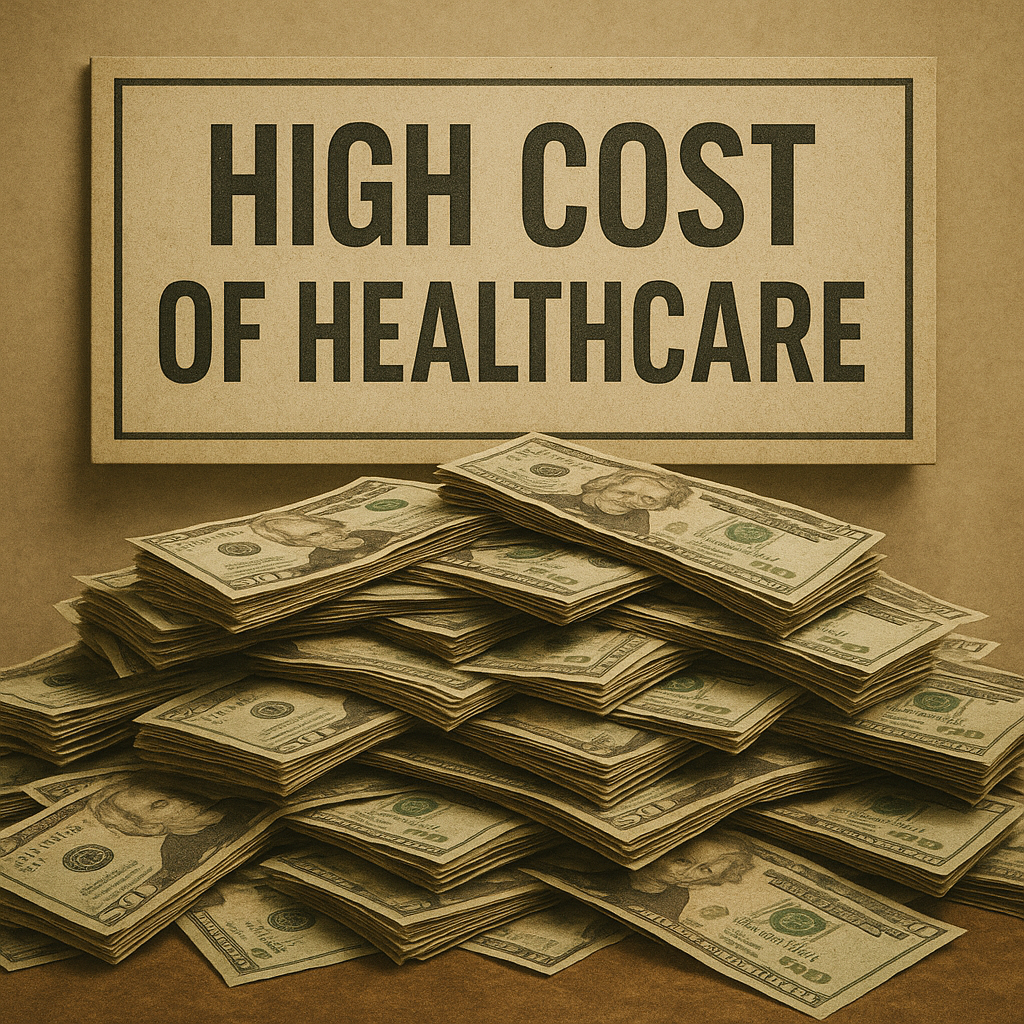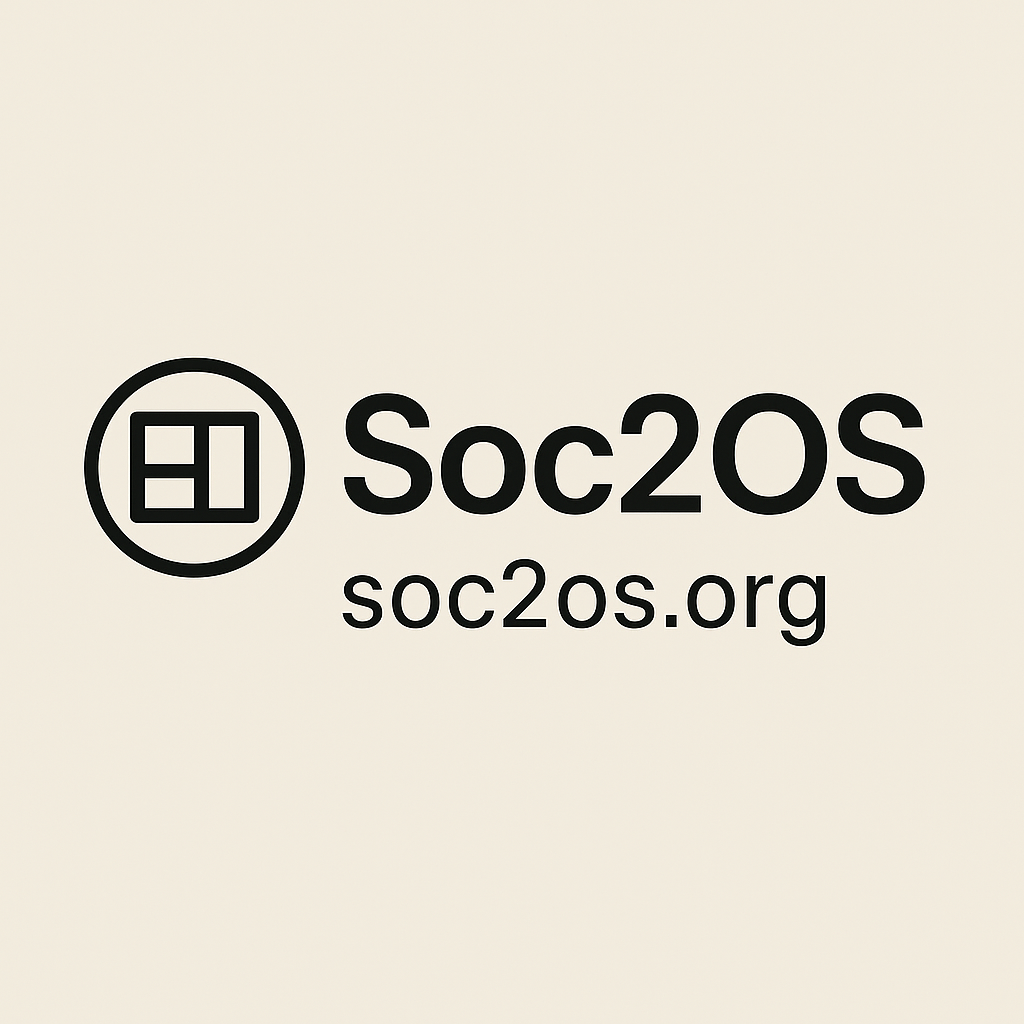
🏥 Healthcare Financing: A System on Life Support
The envelope arrived two weeks after the accident. Inside was a single sheet of paper from the hospital billing office: $12,487.36 for a four-hour stay in the emergency room. The itemized list was surreal — $50 for a single Tylenol, $300 for use of a blood pressure cuff, $2,000 in “facility fees” just for occupying a bed.
Nothing had gone wrong medically. The doctors had been competent, the nurses attentive. But the bill made it clear that in Society 1.0, healthcare is less a public good than a financial trap, a system where ordinary people can go broke simply by seeking care.
The Dysfunction of Today’s Health System
The modern health system does not exist primarily to keep people healthy. It exists to generate profit -it does that well! That single fact explains the tangled bureaucracy, the runaway costs, and the dismal outcomes compared to other wealthy nations.
At its core, healthcare in Society 1.0 has been financialized. Hospitals, insurers, and pharmaceutical companies compete not on who delivers the best health outcomes, but on who can capture the most revenue. Complexity is not an accident—it is a design feature. Every additional form, billing code, insurance tier, and reimbursement loophole is another opportunity for rent extraction.
Consider the markups: $50 for a single Tylenol pill, $500 for a bag of IV saline that costs less than $1 to manufacture, or $2,000 in “facility fees” for 20 minutes in a procedure room. Surgery centers in Oklahoma transparently post prices at one-fifth of what hospitals charge for the same procedures. Americans routinely fly to India or Mexico for surgeries that cost less—including airfare and recovery—than a deductible at home. These disparities reveal the system’s true engine: not medicine, but monopoly.
The result is a culture of medical theater. Patients wait weeks or months for basic care. Doctors spend more time coding visits for reimbursement than practicing medicine. Administrative overhead balloons while outcomes stagnate. Despite spending nearly twice as much per capita on healthcare as peer nations, the U.S. delivers worse life expectancy, higher infant mortality, and epidemic levels of preventable chronic disease.
The cruelty of this design is subtle: it forces people to navigate a deliberately confusing maze. Insurance plans shift costs onto patients through deductibles and co-pays. Surprise bills arrive weeks later. Networks exclude providers without clear logic. All of this complexity serves the same purpose—to protect revenue streams and obscure the true cost of care.
The primary dysfunction, then, is not that our health system is broken. It is that it is working exactly as designed: as a rent-extraction machine built on human vulnerability.
The Global Patterns of Healthcare Failure 🌍
Healthcare dysfunction manifests differently across nations, but the underlying patterns are identical
- United States: Market failure. $4.5T a year (18% of GDP) delivers worse outcomes than peer nations; half a million families face medical bankruptcy annually.
- United Kingdom: The NHS, once exemplary, now suffers chronic underfunding, staff strikes, and waitlists that stretch into years.
- Germany: A strong social insurance model buckles under aging demographics and rising costs, consuming wages and state budgets.
- Canada: “Free” healthcare comes with rationing — patients wait half a year on average for necessary treatment.
- France & Japan: Both face deficits, staff shortages, and aging populations that strain once-stable systems.
Even the success stories show cracks:
- Nordics: Good outcomes but ballooning costs and physician flight.
- Singapore: Efficient, but only workable in a wealthy city-state.
- South Korea: Coverage expanded rapidly, but sustainability falters as it becomes the world’s fastest-aging society.
The common thread: whether private, single-payer, or hybrid, all models were built for industrial-era demographics and steady employment. Some offer solutions to better health outcomes but none are designed for post-industrial realities where aging populations, disappearing jobs, and AI-driven medicine collide.
Employment = Access
Most healthcare systems tie access to employment, even though stable employment is collapsing. Costs are inflated by administrative overhead, perverse incentives, and layers of profit extraction. In 2023, the U.S. spent $4.5 trillion on healthcare — nearly 18% of GDP, more than twice the average of other wealthy nations — yet American life expectancy ranks 46th in the world. Employer-based insurance, once viable when jobs were stable and lifelong, no longer matches reality in an era of precarious work and gig employment.
At the very moment AI could lower costs and improve care, Society 1.0’s financing model keeps access broken.
Sophisticated AI systems can already triage symptoms, read imaging scans, and handle 70–80% of routine cases at a fraction of today’s costs. Preventive care and population health analytics could bend the cost curve dramatically, keeping people healthy instead of waiting for expensive emergencies. Yet none of this matters if the payment system still routes through employers, billing codes, and opaque insurance networks designed to maximize revenue, not outcomes.
The absurdity is clear: we are clinging to a model that delivers worse outcomes at higher cost precisely as the tools to deliver better outcomes at lower cost are within reach.
Summary
- Then: Employer-based insurance was viable when jobs were stable and lifelong.
- Now: If stable employment collapses, so does the financing mechanism.
- Result: More uninsured, higher costs, greater inequity — just as AI could actually deliver cheaper, more efficient care.
- Contrast: AI can triage and treat at a fraction of today’s costs — but Society 1.0 financing keeps access broken.

Leave a Reply